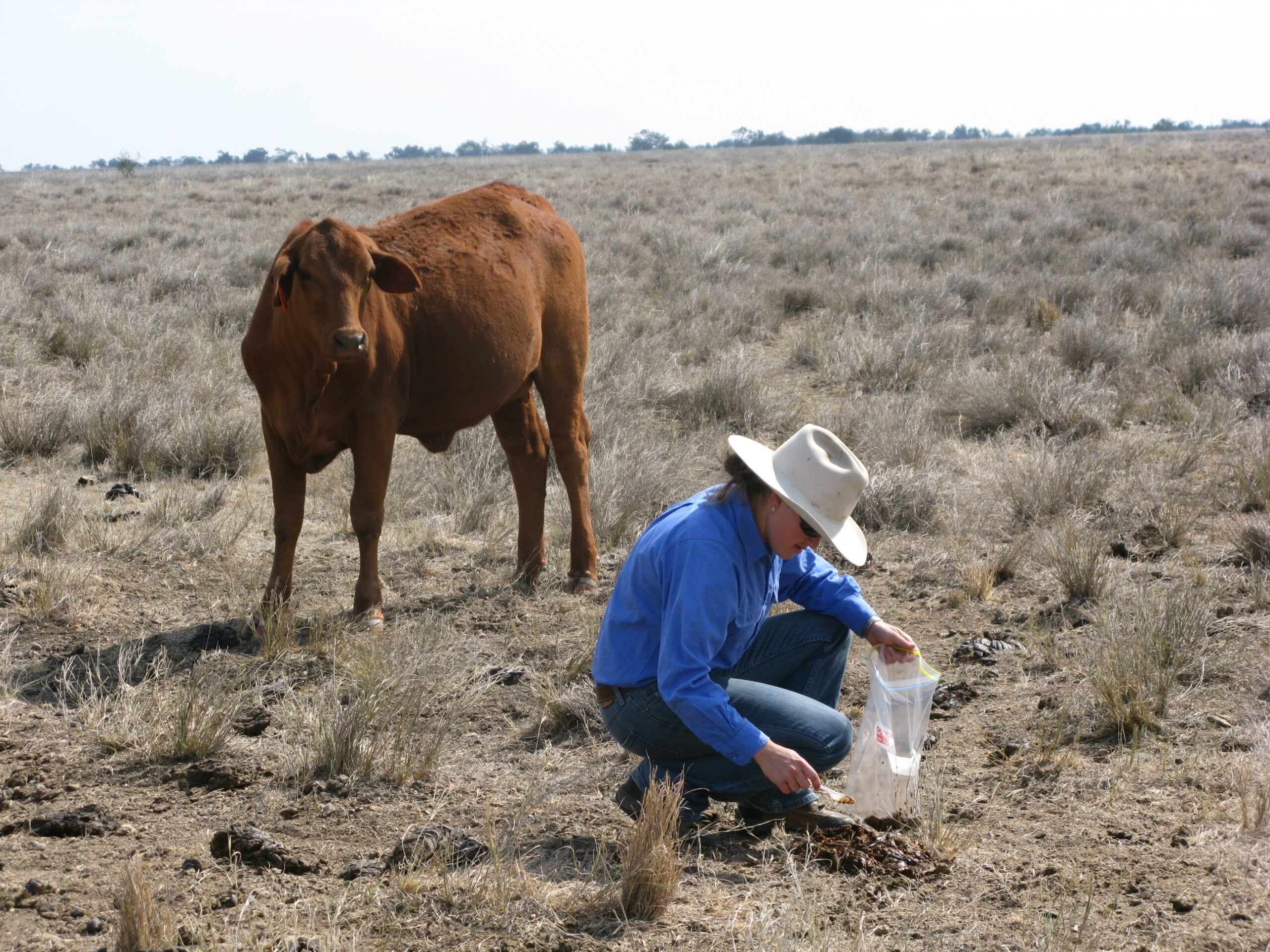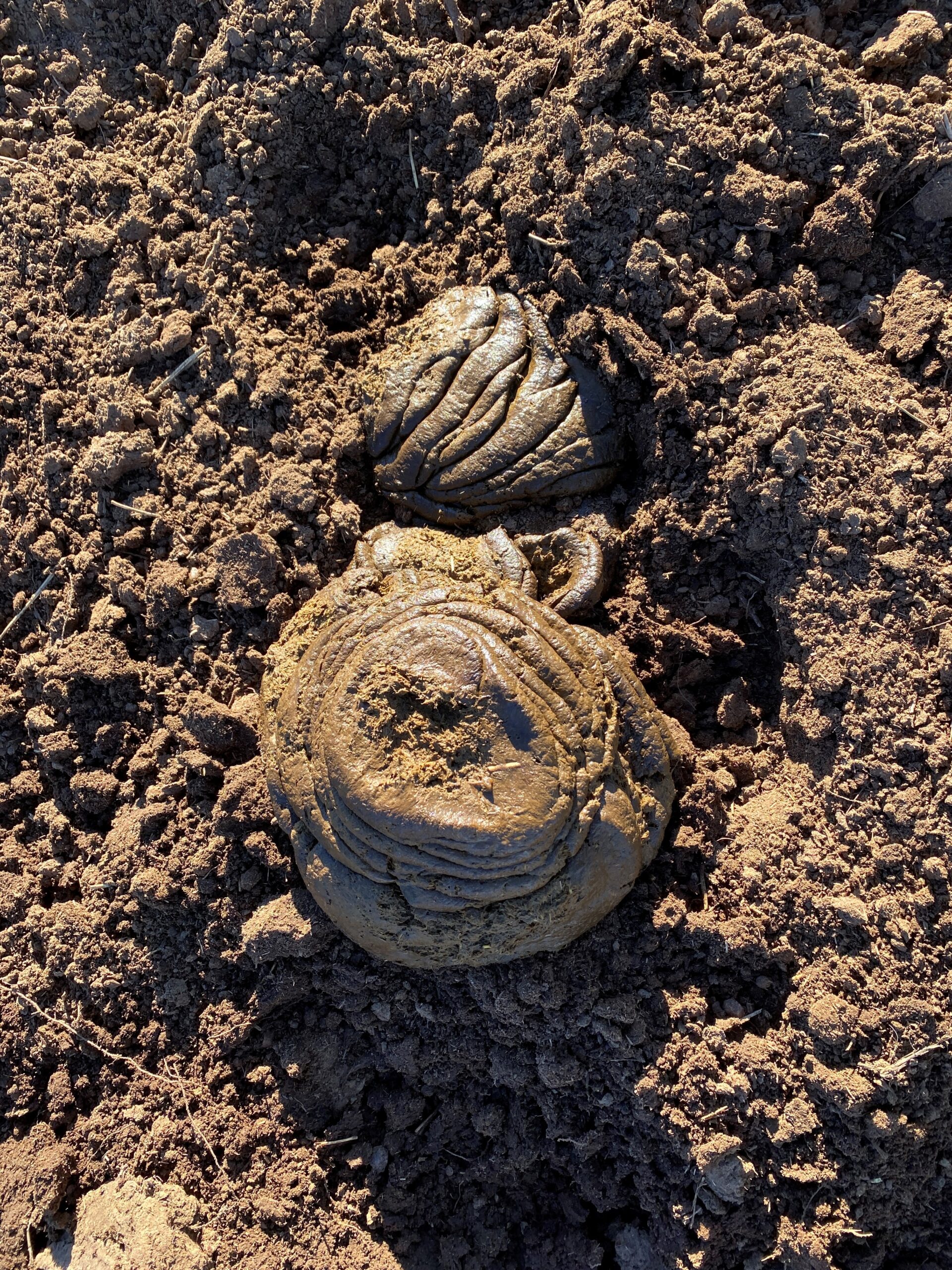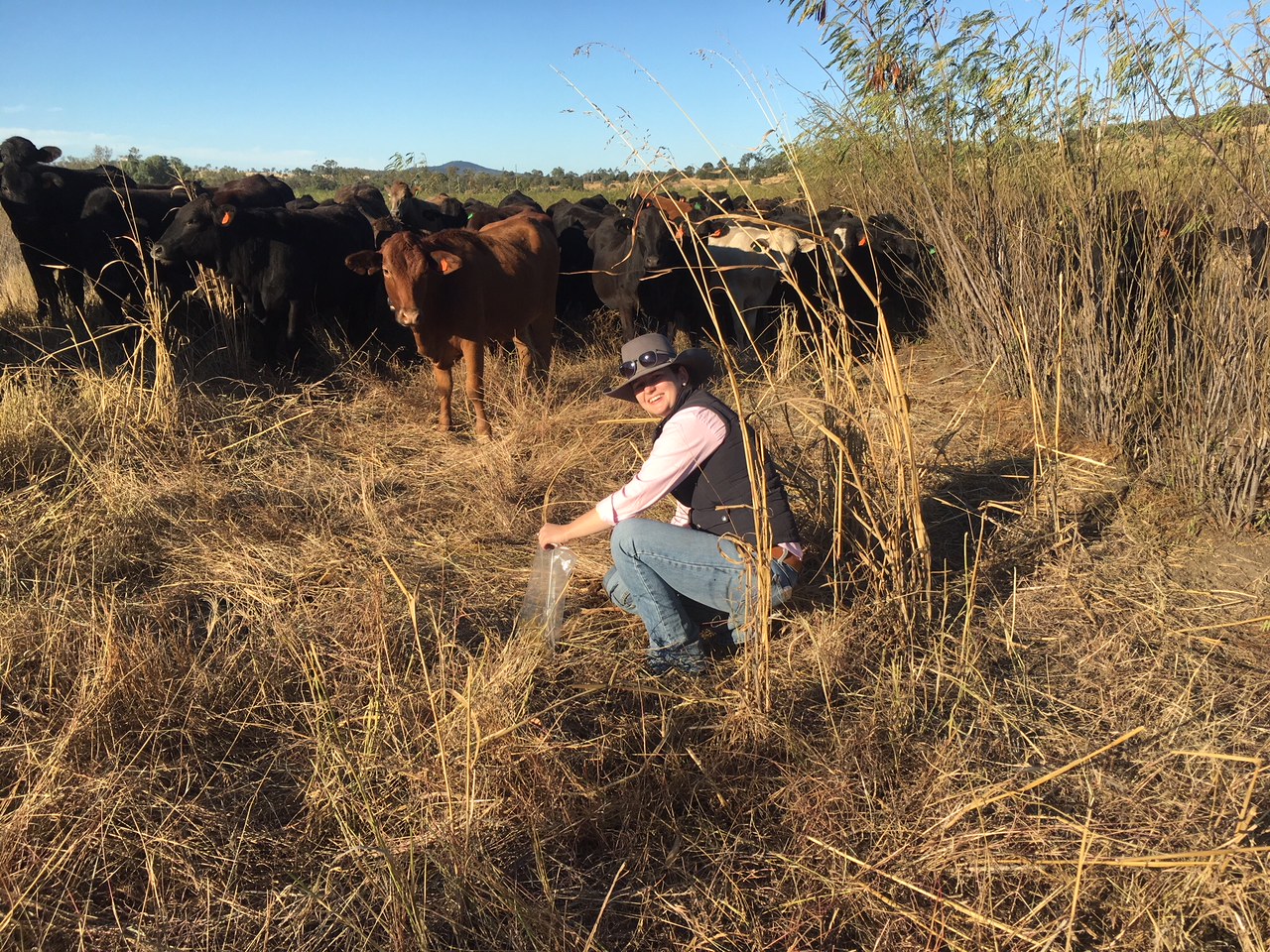Assessing pasture diet quality (NIRS)
Key messages
- Analysis of dung samples can be used to indicate the nutritional status of a herd using faecal Near Infrared Reflectance Spectroscopy (NIRS), also known as dung sampling.
- There are limitations to the accuracy of some of the elements predicted in some environments however the prediction of dietary crude protein is reliably accurate when browse content is low.
- Results from dung sample analysis can be used to make decisions such as the timing of weaning and prioritisation of supplementation.

For years, scientists and graziers have relied on conventional tests using soil, pasture and animal biological specimens to identify nutritional deficiencies in grazing cattle. Unfortunately, none of these techniques provides a true representation of the quality of the diet the animals are consuming.
NIRS (Near Infrared Reflectance Spectroscopy) technology enables producers to directly assess diet quality, enabling them to make proactive and more timely management decisions. Over the past few years, NIRS has been adapted for determining dietary quality for cattle on tropical pastures.
What is NIRS?
The results from numerous NIRS and conventional analyses have been compared to develop calibration equations. NIRS is used most often to analyse faecal samples, known as F.NIRS (Faecal NIRS). The NIRS calibration equations produce predictions, not exact quantitative determinations of the diet quality attributes for a sample being analysed. The calibration equations are used to predict these attributes:
- dietary crude protein (CP)
- dry matter digestibility (DMD)
- faecal nitrogen (N) concentration
- non-grass proportion of diet
- growth rate.
The accuracy of the prediction varies considerably with the attribute being predicted. In some cases the accuracy of the prediction can be very good, such as for nitrogen or protein concentration in forage samples.
Ash percentage is also calculated from the faecal samples, and a phosphorus analysis, using wet chemistry, can be done on request.
What attributes are assessed?
Dietary crude protein (CP)

Predicted dietary crude protein provides an indication of the amount of crude protein in the diet. The amount that cattle will consume will depend on their overall intake of pasture, so the lower the digestibility of the pasture, the lower their dietary intake of crude protein.
Protein is usually the first nutrient to limit production once pastures mature and hay off. The exception is where there are endemic nutritional deficiencies such as phosphorus.
If a diet is high in browse from native species, often the predicted dietary crude protein level will be high but much of this protein is unavailable for digestion by the cattle.
Dry matter digestibility (DMD)
Digestibility is defined as the percentage of feed consumed that is broken down and absorbed by the animal. Digestibility is strongly correlated with energy. As digestibility increases, the quantity of metabolisable energy (ME) available to the animal also increases.
Faecal nitrogen (N) concentration
Faecal N is the amount of nitrogen in the faecal material. Whereas dietary CP is the amount of protein in the diet (that is, going down the animal’s throat), faecal N is the concentration of N in the faeces. Dietary CP is NOT calculated from faecal N. However, there is a correlation between dietary CP and faecal N: when dietary protein levels are low, faecal N concentrations are usually low; and when dietary protein levels are high, faecal N concentrations are usually high.
Dietary non-grass proportions
Grass usually makes up the bulk of diets consumed by grazing cattle. Non-grass (i.e. browse or top-feed and herbage) plant material can contribute significantly to the diet, depending on land types and seasonal conditions. The NIRS prediction of dietary non-grass proportions will vary depending on the time of year and seasonal conditions and on the land type being grazed.
Growth rate
Growth rate predictions are based on a 300kg medium frame steer because this type of animal was used to develop the calibration equation. If the group of cattle being managed are not 300kg medium frame steers, the predicted growth rate will need to be considered in this light. It was found that the accuracy of the growth rate predictions were not reliable so these are no longer reported in commercial results.
Ash
The ash content of most faecal samples falls in the range of 18–22%. Higher faecal ash levels are usually due to soil contamination arising from:
- poor sampling technique
- dung beetles depositing soil within the dung pat
- cattle ingesting soil either on purpose or while grazing short pasture or herbage.
Ingestion of soil is more frequent during drought when feed is very short and cattle are fed supplements on the ground.
The following prediction errors will occur when faecal samples are contaminated with soil:
- Dietary CP is over-estimated
- Digestibility is over-estimated
- Dietary non-grass tends to be over-estimated.
Producers must take care to take fresh dung samples only to avoid contaminating samples.
F.NIRS reports
Producers must complete a submission form which is sent with the faecal samples for analysis. This submission form provides information such as land systems, pastures species, rainfall, and animal class and stage of production, for the paddock which the samples are taken from. This information enables the F.NIRS analysis to be interpreted more accurately. It also equips producers with a means of assessing and recording pasture and animal information objectively.
The NIRS report, the data collection sheet and photographs taken at the time of sampling all help with interpreting the results and also with assisting management decisions in the future.
How well is NIRS working?
NIRS works particularly well on some land systems under certain seasonal conditions. However, results are less reliable when confounding variables occur:
- high proportion of browse in the diet – some browse species contain a high tannin level which binds the protein; although the CP prediction may be accurate, the amount of protein actually available to the animal can be significantly less than the predicted level
- very diverse land systems within a paddock
- high proportion of herbage in the diet
- sampling from a number of classes of stock in the paddock
- stock eating a reasonable amount of energy and protein supplements such as whole cottonseed, protein meal, grain and molasses.
The reliability of the dietary CP predictions for mulga and spinifex country is not particularly good because dietary CP tends to be overestimated; however the non-grass component and the digestibility levels appear to be reasonably reliable. On these land systems, it is a given that protein is more limiting than energy; once stock begin relying on mulga leaves, for example, as a major source of forage in their diet, it can be assumed that the diet is protein-deficient. Monitoring the digestibility of the diet through faecal NIRS provides a reasonable indication of dietary ME, enabling producers to pinpoint when energy supplements need to be provided or whether animals need to be turned off to save on expensive bulk supplements.
How to best use NIRS information?

Whilst one F.NIRS analysis provides a good indication of the current dietary status of the mob tested, it is important to get an indication of how quickly diet quality is falling to determine when cattle are likely to require supplements, how long a supplement will be appropriate before it needs to be upgraded, and when cattle are likely to begin losing weight.
Getting consecutive analyses done for a paddock or a group of cattle that are of most concern is important for developing both short- and long-term nutritional management strategies.
Some of the nutritional management strategies that F.NIRS diet quality results can be used to assist in making informed decisions are:
- timing of weaning and age to wean down to;
- putting classes of cattle with the highest nutrient requirements (e.g. first-calf cows, weaners) into paddocks with the highest diet quality;
- identifying nutrients that are deficient in the diets as well as any nutrient imbalances, and modifying licks to ensure there is a balance between nutrients fed in licks with nutrients obtained from pasture;
- identifying when to upgrade from a nitrogen-based (i.e. urea-based) lick to an energy-based supplement before stock begin to rapidly lose weight;
- identifying when to sell stock before they begin losing weight.
Getting dung samples analysed
There are two companies available to analyse dung samples for diet quality:
- Symbio Laboratories Brisbane
-
- Address: 44/52 Brandl St, Eight Mile Plains, QLD 4113
- Phone: (07) 3340 5700
- Phone: 1300 703 166
- Website: www.symbiolabs.com.au
- Gcology (linked to Gilmac Pty)
-
- Josh Mackie PhD
- Gcology Data Services
- M: 0481 142 275
- E: joshua.mackie@gcology.com.au
- Website: www.gcology.com.au
Written by Désirée Jackson, formerly Queensland Government.